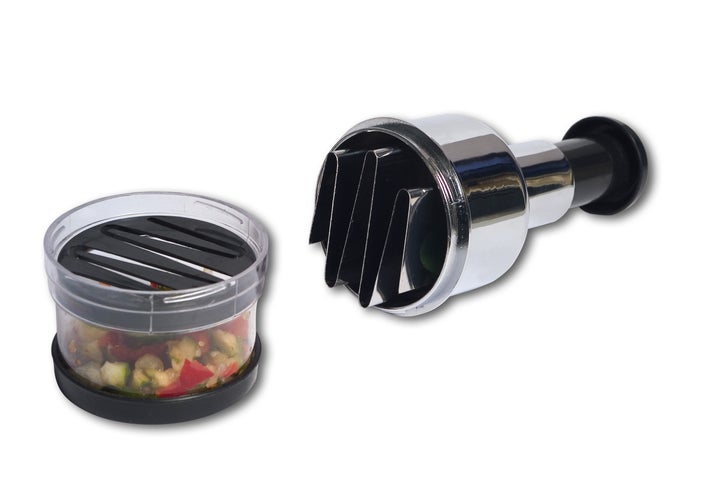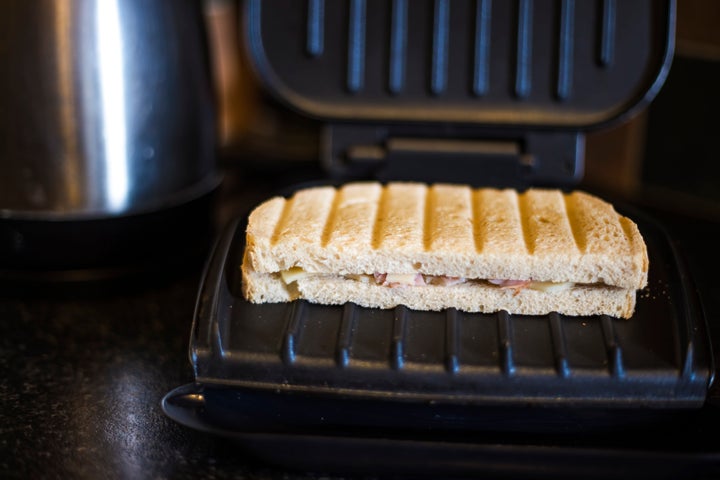Your favorites might be on the list. These items earned the most skepticism from professionals who cook for a living.
Anyone who dabbles in home cooking and who uses Instagram or TikTok is undoubtedly familiar with the many, many trendy kitchen tools on the market right now. These items have devoted influencer fan bases and look really pretty in photos and videos, but some professional chefs question their effectiveness and their dollar value.
We asked a group of kitchen pros to name the popular cookware pieces that they’d never add to their own shopping lists, and these are the eight that earn the most skepticism from folks who cook for a living.

Vegetable and herb “choppers”
For those with physical limitations, vegetable choppers can be a lifesaver. But if you’re able to master some basic knife skills, they might just be a big use of valuable space.
The inescapable “zoodle” trend from a few years ago led to the rise in spiralizers (devices designed to cut zucchini into thin ribbons) and other forms of specialized chopping devices for fruits, vegetables and herbs saw similar popularity growth. But according to Manuel Hewitt, the owner and executive chef of The Barrel Room in San Francisco, these items aren’t worth the money or the kitchen drawer real estate.
“These kitchen gadgets that only serve one function just get in the way, and [they] are hardly ever used due to their specialization. All the various ‘chopper’ style gadgets usually replace what could be considered a basic knife skill, and it’s better to just use a knife rather than clutter up your kitchen with more plastic junk,” Hewitt explained.
Garlic presses
On a similar note, garlic presses, which solely exist to squish garlic cloves into small pieces, aren’t seen as crucial tools by Scott Smith, head chef of The Oarsman in Marlow, United Kingdom. Smith finds that, when he uses a garlic press, “the garlic comes up round the edge and makes a mess, and [the press] takes longer to clean than the time you ‘save’ crushing the garlic.”
Rather than purchasing a press, Smith recommends that you “instead just roughly chop the garlic and mince it into a paste using the side of the knife.” Adding a pinch of coarse salt to the garlic as you crush it with the side of the knife can help create a paste that’s less chunky (but still very flavorful).
Not to mention, your garlic press could be the reason you have garlic breath — it produces a smelly enzyme called allicin when it presses down on the clove.
Rice cookers
A lot of home cooks will probably take issue with this one, since rice cookers are so popular. After all, the “set it and forget it” convenience of electric rice cookers is a marketable feature and one that many home cooks value. But if you aspire to cook a perfect batch of rice, Oscar Gonzalez, food and beverage director of the Hard Rock Hotel New York, doesn’t see the rice cooker as the right move. “[Rice cookers] either overcook the food or don’t cook everything evenly. Rice is delicate and needs attention,” Gonzalez said.
Gonzalez urges home cooks to ditch the rice cooker and “cook rice traditionally — it takes the same amount of time, and you can create a fluffier rice with the ability to add layers of flavor.” His preferred piece of rice cookware is “a Le Creuset Dutch oven. It’s perfect for retaining heat and creating the best rice.”
Classic stovetop pressure cookers
During the pandemic, ardent fans of the Instant Pot were legion, and social media overflowed with testimonials about how easy it was to make a fast and satisfying meal using the Instant Pot’s pressure cooker setting. That spurred a renewed interest in all types of pressure cookers, with some amateur gourmands deciding to avoid the trendy Instant Pot in favor of a more analog stovetop version. Jason Goldstein, a chef, cookbook author, can see the appeal: “It feels like magic when you see short ribs and tough cuts of meat cook so much faster than the low and slow method you use in a slow cooker.”
Yet when it comes to classic pressure cookers, Goldstein warns that “they are harder to use than you think. If it is not set to the right temperature, you can ruin your food, and if it is not locked well, you can really hurt yourself.” There’s also the matter of space; stovetop pressure cookers are cumbersome items, especially when you consider that they only perform one single function. For that reason, Goldstein recommends that you stick with the trend and “buy an Instant Pot instead. It mimics a pressure cooker but is super easy to use and has a foolproof locking system. It also serves as a slow cooker, so it’s a win win!”
All-in-one pans
It’s hard to think of a more Instagrammable piece of cookware than the beautiful, pastel-hued “Always Pan” from direct-to-consumer brand Our Place. These coverable skillets claim to “braise, sear, steam, strain, saute, fry, boil, bake, serve [and] store,” and the social media fervor around the Always Pan inspired other brands to release their own all-in-one pan models. But unfortunately, some chefs expressed concern about the validity of the Always Pan’s “do it all” claims.
“My main concern is its poor heat distribution, which can be a significant drawback for recipes requiring precise temperature control,” said Kevin Ashton, former restaurant chef and current culinary advisor for Restaurantji. He also mentioned that certain versions of the Always Pan aren’t oven-safe (the upgraded Always Pan 2.0 is oven-safe up to 450 degrees Fahrenheit), which “limits its versatility in a kitchen setting. For me, cookware needs to be both versatile and reliable under various cooking conditions.”
When Ashton needs a skillet that can perform regardless of the dish and the cooking method, he reaches for “a good old cast-iron skillet. It’s versatile, durable, and great for a variety of cooking styles. Plus, it adds a fantastic flavor to almost any dish.”
Mini blenders
A blender that’s just the right size for a single beverage appeals to plenty of small-space dwellers (including our food editor), and Akhtar Nawab, executive chef of Alta Calidad in Brooklyn, New York and co-CEO of Hospitality HQ, concedes that mini blenders from prestige brands like Ninja “are great for making smoothies and are cost-effective.” But he avoids keeping one in his own kitchen because he “finds them limiting” and would rather invest in a powerful blender that can whip ingredients together on a bigger scale.
“I prefer a commercial restaurant blender like the Vitamix, which provides a range of high-low speeds and a much smoother puree.” Nawab does acknowledge that top-of-the-line blenders in a full size “are significantly more expensive” than their single-serve counterparts, but if they’re well cared for, he insists that they can last for many years.
Panini presses
Our consulted chefs generally frowned upon any item that’s only designed to complete one culinary task, as they can contribute to clutter and can often be replaced by items that you already have in your kitchen. Case in point? The panini press, which Glenn Rolnick, chef of Carmine’s and Virgil’s Real BBQ in New York City, calls “not a necessary piece of equipment.”

In lieu of a specialized press for paninis, Rolnick suggests using a “non-stick griddle pan.” When paired with a small weighted grill press (which can be purchased more inexpensively than a full-scale panini press), these pans “are great for all types of sandwiches, including melts and burgers, along with French toast and even griddled vegetables like carrots, asparagus, green beans, and zucchini.”
Cooking torches
A torch in the kitchen might feel a bit high-and-mighty to many home cooks, but in addition to being essential to a perfect crème brûlée, torches can be a quick, easy and undeniably fun way to add a touch of browning and caramelization to just about anything. Amazon and other big retailers carry countless “kitchen cooking torches,” which are miniature models with flames fueled by butane cans. Unfortunately, as Casey Doody, pastry chef of Boka Restaurant Group in Chicago, puts it, “these small torches are great for use a few times, but what home cooks may not understand is that the torches don’t come with [extra] butane, and they’ll have to buy the butane cans [separately] to refill them.” These costs can add up, and the fire that results from them “is not very strong. [Plus,] the torches break easily.”
Instead of opting for a “kitchen torch,” Doody advises amateur pastry chefs to head to the hardware store and grab a legit blowtorch. “You can pick up the Bernzomatic MAP-Pro 14.1 high heat torch kit for $59.99 at your local Ace Hardware and it will last until the [much larger] butane tank needs to be swapped out,” she told us. In addition to crème brûlée and meringue, Doody uses her blowtorch “to heat up my knife when slicing brownies, cakes, cheesecake — it’s my secret to getting sharp clean-cut edges!”
Credit: Source link